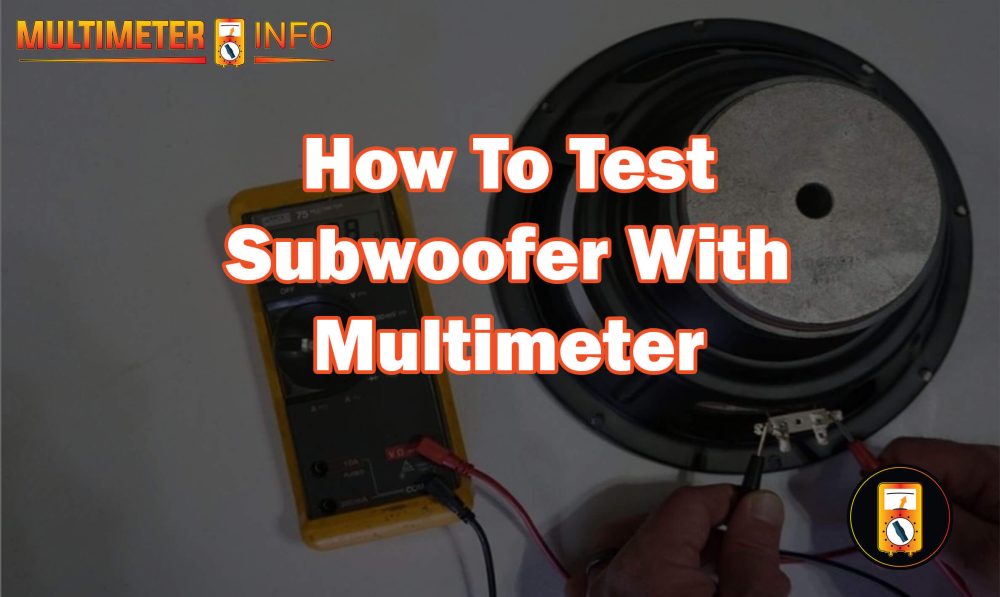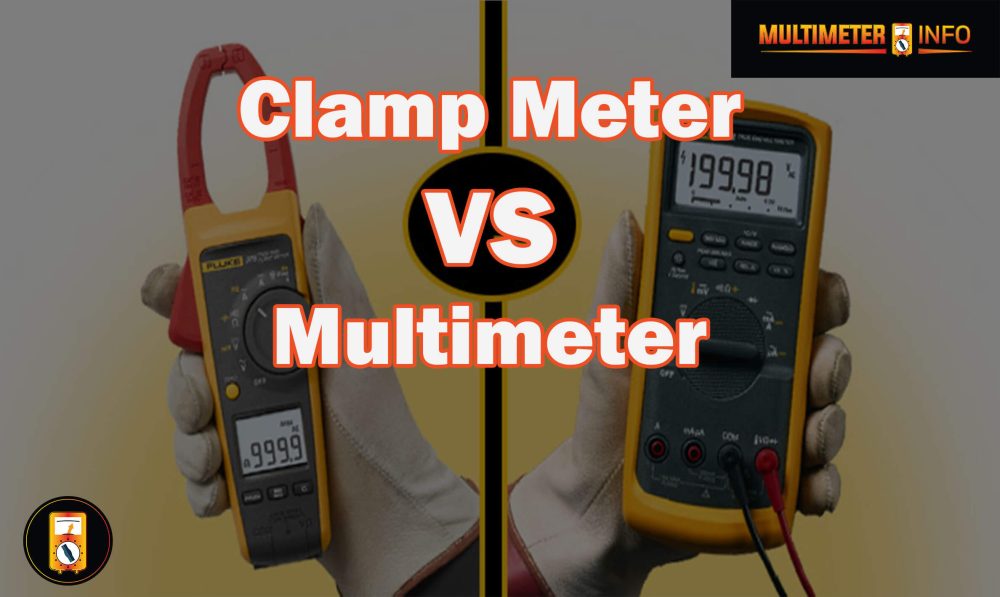Do you want to know how to test a subwoofer with a multimeter? Well, if so, we’ve got the answer for you! With just a few simple steps, you can quickly and easily use your multimeter to check that your subwoofer is working properly. This method will help ensure your audio system provides high-quality sound. Keep reading to learn more about what components are necessary to get started and exactly how this process works!
What is a Subwoofer?
A subwoofer is a type of loudspeaker specifically designed to reproduce low-frequency audio signals, such as bass and sub-bass. Subwoofers are often used in home theater systems, car audio systems, and professional sound reinforcement systems to enhance the overall sound quality of the system.
Subwoofers can also be used to add additional low-frequency impact to music or movie soundtracks, producing a “boom” feeling. Subwoofers are usually housed in an enclosure and powered by an amplifier. The size of the subwoofer will depend on the size of the room it is being used in as well as other factors such as power requirements and desired frequency response.
Some subwoofers have built-in amplifiers that allow for easy setup and installation. Most subwoofers are designed to be placed close to walls or corners so they can best utilize the bass reflections from those surfaces, making them more efficient at producing deep bass sounds. In addition, some subwoofers are equipped with adjustable crossover frequencies, allowing you to tailor the subwoofer’s output to your listening environment.
How does a subwoofer work?
A subwoofer is a type of speaker specifically designed to produce low frequencies known as bass. This makes them ideal for playing music with strong beats, such as hip-hop or electronic dance music (EDM).
Subwoofers come in various sizes and shapes and can be powered by an amplifier, your sound system’s receiver, or even just your car stereo. Most subwoofers come with a built-in amplifier, but you may need to purchase one separately if your current sound system doesn’t have one.
Subwoofers work by using an enclosure that amplifies the low-frequency audio signals. The enclosure also helps isolate and direct the low frequencies away from other speakers in the system. Generally speaking, larger enclosures make for louder bass as they can contain more air and vibrations produced by the woofer.
Signs of a bad subwoofer:
Distorted Sound:
If the sound from your subwoofer is distorted, it could be a sign of a bad speaker.
Lack of Bass Response:
A good subwoofer should produce deep bass tones that can be heard and felt in the room. If you don’t feel anything when playing music or movies, then your subwoofer is not performing correctly.
Low Volume Levels:
Subwoofers are designed to handle higher volumes than regular speakers, so if your levels are always low even with the volume cranked up it’s likely time to replace the unit.
Poorly Engineered Crossover Settings:
A crossover setting allows frequencies to be split between different components, allowing for more accurate sound reproduction. Poorly calibrated crossover settings can result in the subwoofer not producing the desired sound.
Buzzing or Humming:
If your subwoofer produces a buzzing or humming sound when turned on, it could be due to an electrical issue with the unit.
Poor Range of Frequency Response:
A good subwoofer should be able to accurately reproduce low-end frequencies down to 20 Hz and higher frequencies up to 200 Hz. If it’s not producing accurate sound across this range, then it’s time for a replacement.
Weak Output Power:
Weak output power is usually caused by inefficient components within the amplifier section of the speaker system. This can result in poor-quality audio and ultimately lead to a bad subwoofer.
Unbalanced Sound:
Unbalanced sound can be caused by improper placement of the subwoofer, resulting in certain frequencies being over-emphasized and others not reproduced at all. This can result in a muddy and distorted sound.
Poorly Designed Cabinet Design:
A poorly designed cabinet design will often cause reflections that will muffle the sound produced by the speaker system.
Poor Connections:
Worn-out or corroded connections between components can degrade the audio quality of your system, leading to poor performance from your subwoofer. It’s important to inspect these connections regularly and replace them if needed. By keeping an eye on these signs, you can ensure your subwoofer is always performing at its best.
How To Test A Subwoofer With A Multimeter?
To test a subwoofer with a multimeter, you will need to use the continuity setting on the meter:
- Start by connecting the red and black probes to your multimeter. Place the red probe on one of the terminals on your subwoofer, and the black probe on a different terminal.
- Switch your multimeter to “continuity.” Your multimeter should begin beeping if there is continuity between the two points you’re measuring, indicating that your subwoofer is working properly.
- If you don’t hear a beep when testing for continuity, it could mean that there is an open circuit in either of the terminals or wires connected to them. Check each connection carefully for any visible damage or breaks in the wire.
- Once you have identified and fixed any issues with damaged wiring or terminals, switch your multimeter back to continuity and test again.
- If everything appears to be in order and you still don’t hear a beep, the speaker coil may be damaged or blown. To test this, you may need to take off the cover of the subwoofer and measure the resistance of the coil with an ohmmeter. A faulty coil will not have any resistance when measured.
- If none of these tests indicate that there are any problems with your subwoofer, then it should be working properly!
It is important to keep in mind that these steps should only serve as a guide for testing a subwoofer with a multimeter. Always use caution when using any type of electrical device, as improper use can lead to serious injury or damage. If you are unsure about how to properly use a multimeter or any other electrical tool, please consult with a qualified technician before attempting any repairs.
Frequently Asked Questions:
You will need a multimeter, AC adapter (optional), and speaker wire. If you are testing an active subwoofer amplifier, you will also need an audio signal source such as a CD player, tuner, or smartphone.
Yes, it is safe to use the multimeter for testing your subwoofer provided you follow all safety instructions included with both the multimeter and your device.
A multimeter allows you to measure resistance, capacitance, voltage, and current in your subwoofer system. It also can be used to check continuity and polarity between audio components.
Refer to your specific model’s user manual for detailed instructions on setting up and using your multimeter. Generally speaking, however, you will need to connect the test leads from the multimeter to either terminal of the speaker or amplifier under the test. If necessary, adjust any settings on the device being tested as specified.
Conclusion:
In conclusion, testing a subwoofer with a multimeter can be a great way to ensure that your system is working properly. It’s important to remember when testing, you should use the proper settings and test the correct parts of the subwoofer for the most accurate results. With correct testing, you can make sure that your system is delivering top-quality sound for optimum performance.






